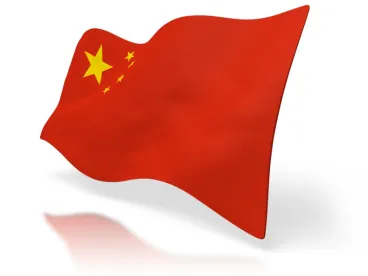On 4 May 2015, the National Development and Reform Commission, the National Health and Family Planning Commission, and four other ministerial departments of the Chinese central government jointly published the Notice of Promoting the Reform of Drug Pricing. As of 1 June 2015, the price ceiling for most drugs has been eliminated, with the intention of reducing government intervention in drug pricing and adopting a market-driven pricing system.
Chinese consumers have long complained about high drug prices. To address this problem, in 2000 the Chinese government adopted a price ceiling system for drugs. At that time, the medical insurance system and the drug bidding and procurement system were not sufficiently sophisticated to set drug prices through market forces alone. A government-controlled pricing system thus appeared to be a reasonable choice for the Chinese government to ensure the healthy development of China’s pharmaceutical market. In recent years, however, the price ceiling system failed to achieve the intended reduction in drug prices, in part because of increased competition and increasingly strong regulatory oversight. As part of efforts to upgrade the regulatory environment of the pharmaceutical market, the Chinese government has largely eliminated the pricing control regime in order to encourage competition in the world’s second-largest pharmaceutical market.
On 4 May 2015, the National Development and Reform Commission (NDRC), the National Health and Family Planning Commission, the Ministry of Human Resources and Social Security, the Ministry of Industry and Information Technology, the Ministry of Finance, the Ministry of Commerce, and the China Food and Drug Administration jointly published the Notice of Promoting the Reform of Drug Pricing (Notice). The Notice states that as of 1 June 2015, the price ceiling of most drugs is removed, in hopes of establishing a market-driven pricing system.
Reforming the Drug Pricing Mechanism
In order to improve the drug purchasing mechanism, better control the drug expenditure of medical insurance funds and allow drug prices to be determined by the market, government-set prices on most drugs except narcotics and Class I psychotropic drugs have been cancelled. More specifically, the reform includes the following changes:
-
For drugs purchased by medical insurance funds, the medical insurance authority will work with other relevant authorities to formulate drug purchasing standards, and will explore a mechanism that will lead to reasonable drug prices.
-
For patent drugs and drugs produced exclusively by certain pharmaceutical companies, pricing will be set through transparent multi-party integrative negotiation.
-
For blood products not covered by medical insurance, prophylactic immunisation drugs purchased through state-centralised procurement, free anti-AIDS drugs and contraceptive drugs, prices will be decided through negotiation or bidding.
-
The government will continue to control narcotics and Class I psychotropic drugs with price ceilings.
-
For other drugs, the drug manufacturer or distributor may decide the price based on cost and market demand.
Strengthening Drug Pricing Supervision
Although the Notice has lifted price ceilings from most drugs, the government will not cease its supervision of the pharmaceutical market. On the contrary, the Notice identifies actions to strengthen the supervision of drug pricing so as to maintain reasonable prices:
-
The health and family planning authority will improve the drug procurement mechanism of state-run public hospitals and community medical and health care institutions, encourage and promote market competition, and purchase drugs at reasonable prices.
-
The medical insurance authority will develop its price control function by establishing proper standards and policies regarding the procurement of drugs using medical insurance funds based on overall consideration of the market price and affordability for medical insurance funds and for patients.
-
The health and family planning authority will strengthen the supervision of medical institution treatment practices by establishing reasonable evaluation and reward/punishment mechanisms, improving the management of medical institutions, controlling unreasonable drug and medical device consumption, and reinforcing the oversight of medicine expenditures.
-
Each competent pricing authority will make rules to improve its supervision system for drug prices.
On the same day the Notice was issued, NDRC published the Notice of the National Development and Reform Commission Regarding Strengthening the Supervision on Pricing of the Pharmaceutical Market (NDRC Notice). According to the NDRC Notice, competent pricing authorities at various levels will immediately conduct a special six-month drug price inspection, with special focus on areas where competition is inadequate and drugs are intended for special patients. An additional goal is to identify and stop any illegal operation that disrupts drug pricing by taking advantage of the drug pricing reform.
Conclusions
By lifting drug price ceilings, the Chinese government is shifting its role from a price controller to a market force regulator. While it is not clear what impact the Notice will have on the pharmaceutical market, it likely will not result in any significant price increase for most drugs in the short term because of the existing bidding and procurement mechanisms, as well as the limitation on drug expenditure under the current medical insurance scheme. Given the Chinese government’s relentless efforts to control drug prices, this change may be seen as the application of Taoist wisdom: “let the enemy off first in order to catch him later.”
Mandy Yang and Samuel Chen are co-authors of this article.





 />i
/>i

